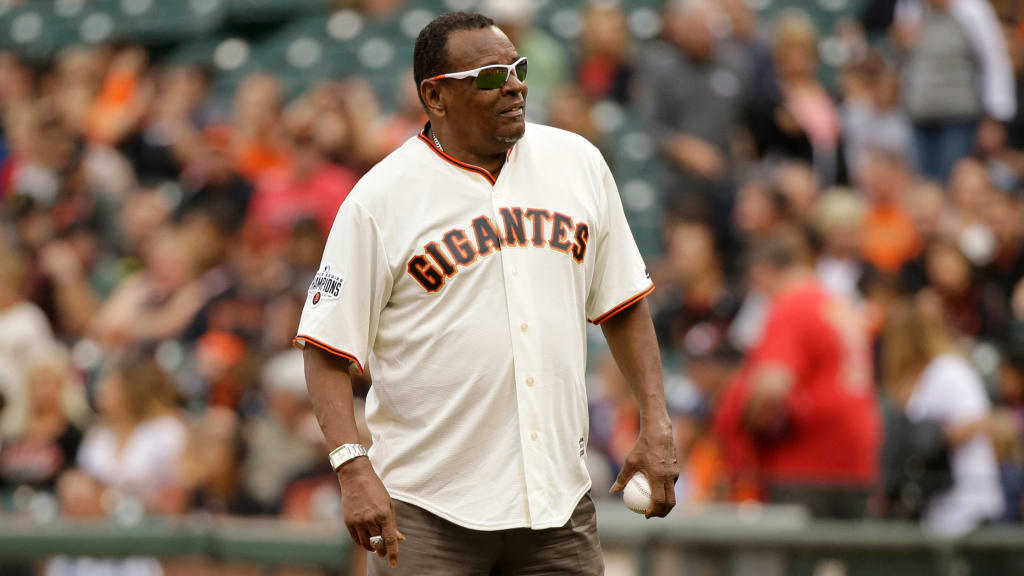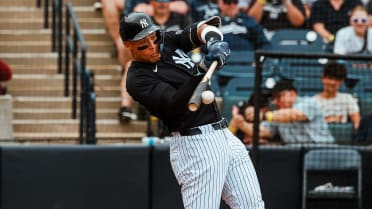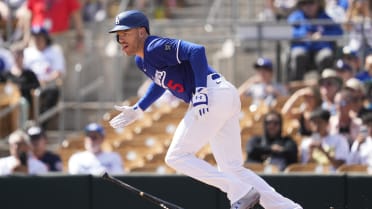Fuentes reverential of Mays on 90th birthday

Tito Fuentes still remembers what Ozzie Virgil Sr. told him when he first reached the Majors with the Giants in 1965.
“You’re about to see what a real ballplayer looks like,” Virgil said.
Virgil, of course, was referring to Willie Mays, who headlined a star-studded Giants roster that also included fellow Hall of Famers Juan Marichal, Orlando Cepeda and Willie McCovey.
When a 21-year-old Fuentes joined the fray in August 1965, Mays was in the midst of his second National League MVP campaign, flashing the greatness that Virgil saw when he played alongside the "Say Hey Kid" at the beginning of his career in New York.
At 34 years old, Mays crushed a career-high 52 home runs, including 17 in August, which set an NL single-month record that was later broken by Sammy Sosa in 1998.
“That was my introduction to him,” Fuentes, 77, recalled. “Everywhere we went, home run, home run, home run. He had tremendous power.”
Fuentes, the former Giants second baseman, who is now in his 18th year as a Spanish-language radio broadcaster for the club, witnessed plenty of other unforgettable moments over the seven seasons that he spent as Mays’ teammate in San Francisco.
Last week, Fuentes took some time to reflect on his favorite memories of Mays, who celebrates his 90th birthday Thursday.
Fuentes, one of the last baseball players signed out of Cuba before the United States embargoed the Caribbean island, batted .302 with 20 home runs at Triple-A Tacoma in 1965 before earning his first callup with the Giants. Shortly after arriving in the big leagues, Fuentes was taking batting practice at Candlestick Park, eager to make an impression on Giants veterans like Mays and Cepeda.
“Everyone would gather around the batting cage because you already have a reputation based on what you did in the Minors,” Fuentes said in Spanish. “So they’re watching to see what you can do. I’ll never forget, I swung at a ball and kept watching it because I thought I hit it out. And they started laughing because the wind knocked it down. So I said, ‘I didn’t get all of it, I’ll try again.’ And they said, ‘Chiquito, rook, you have to go the other way.’ And I thought, ‘What do they know? I have power.’ But they were right.”
As Mays knew all too well, hard-hit balls to left field were knocked down by the wind and became routine outs at Candlestick, forcing most hitters to adapt their swings to go to right field instead. It was the first of many lessons that Mays helped impart to Fuentes, who also changed his approach to Spring Training at the behest of the Giants' legend.
“I would show up out of shape and use Spring Training to get in shape,” Fuentes said. “That’s what the workouts were for. But he told me, ‘No, you have to show up to Spring Training in shape so you can focus on what you need to work on. If you’re focused on losing weight, you’re falling behind because you’re not working on what you need to work on.’ Those are things that hit you right away.”
Ironically, Mays was so naturally gifted that he didn’t have to put in much work to stay sharp during the regular season.
“He had such innate abilities that he didn’t really have to practice,” Fuentes said. “He would take his swings during batting practice, but I never saw him out there practicing his fielding because he didn’t have a weakness.”
Even toward the latter half of his career, Mays had a knack for coming through in the clutch for the Giants. Fuentes vividly remembers when Mays came off the bench to hit his 600th career home run and lift the Giants to a 4-2 win over the Padres on Sept. 22, 1969. At the time, Mays and Babe Ruth were the only two players in Major League history to reach the prestigious milestone.
“Everything came easy to him,” Fuentes said. “In the clutch, clutch moments, Willie would show up and get it done.”
Fuentes wore No. 23, so whenever the Giants went on road trips, he would often be placed alongside Mays’ No. 24 in the visiting clubhouse. Mays would often prank local media members by having Fuentes sit at his locker after games and take questions from reporters.
“The journalists would be talking to me because we were both black,” Fuentes said. “They’d be talking, but then they’d look at me like, ‘You’re not Willie.’ And Willie would be off laughing in the bathroom or the training room. I didn’t speak English either. That’s how he was.”
Despite his superstardom, Mays always tried to make sure to take care of teammates. Whenever a company offered to send him free shoes or shirts, Mays would say, “No, you have to give them to 25 players.”
Fuentes said that Mays’ home in Atherton, Calif., resembled a sporting goods store because of all the baseball gear that was constantly sent his way. Whenever he dropped by for a visit, Mays encouraged Fuentes to take what he needed.
One year during Spring Training in Arizona, Fuentes came down with an injury and was told by the Giants to go see a doctor in Scottsdale. Mays handed Fuentes the keys to his signature pink car so that Fuentes could drive to his doctor’s appointment. On his way to the clinic, Fuentes was stopped by the police, who were expecting to see the "Say Hey Kid" behind the wheel.
“They said, ‘Who are you?’ I told them, 'Tito Fuentes,'” he said. “But it was Willie Mays’ car, so they thought I stole it.”
That generosity and leadership explains why Fuentes and his teammates later felt an irrevocable void in the clubhouse when the Giants traded Mays to the Mets in 1972.
“That was tragic,” Fuentes said. “It’s like if you’re 12 or 13 years old and your dad is guiding you through life and then he dies and leaves you alone. We didn’t have a leader. McCovey was still on the team, but he was very quiet. He wasn’t like Willie. We were left alone. That was bad.”
It didn’t take long for Mays to show the Giants what they were missing. As fate would have it, Mays ended up making his Mets debut against the Giants on May 14, 1972, and promptly hammered a go-ahead home run that propelled his new club to a 5-4 win at Shea Stadium.
“He hit a home run and beat us,” said Fuentes, who went 4-for-4 with two doubles and a homer that day. “It was automatic. Always at the right time, doing the right things.”
After nearly six decades in professional baseball, Fuentes maintains that Roberto Clemente and Mays were the greatest players that he ever saw.
“The things you said couldn’t be done, Willie did them,” Fuentes said.
Senior Reporter Maria Guardado covers the Giants for MLB.com. She previously covered the Angels from 2017-18.




